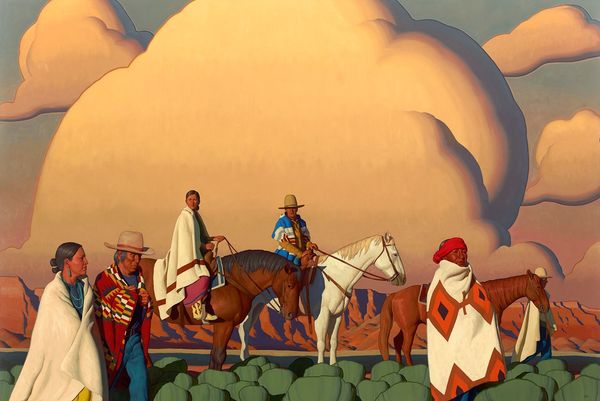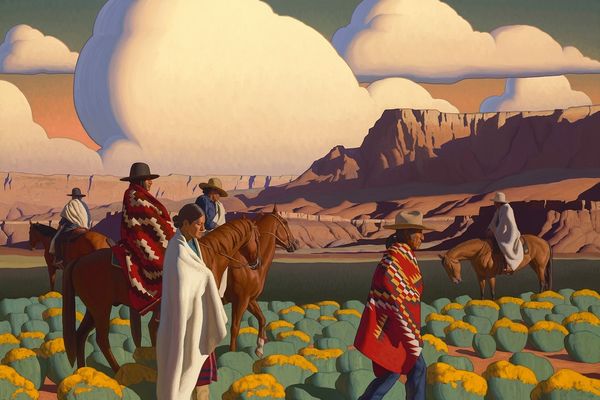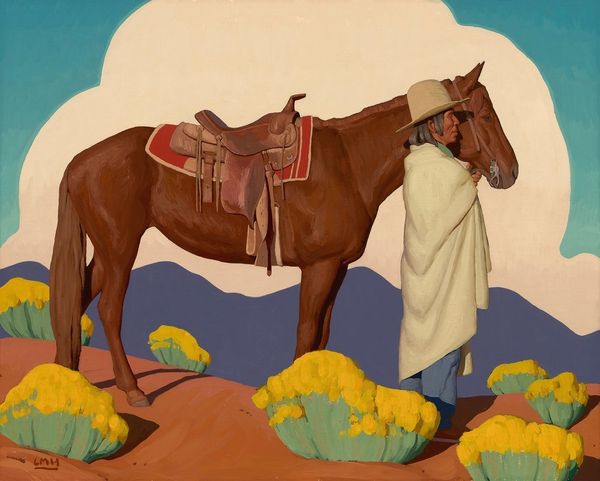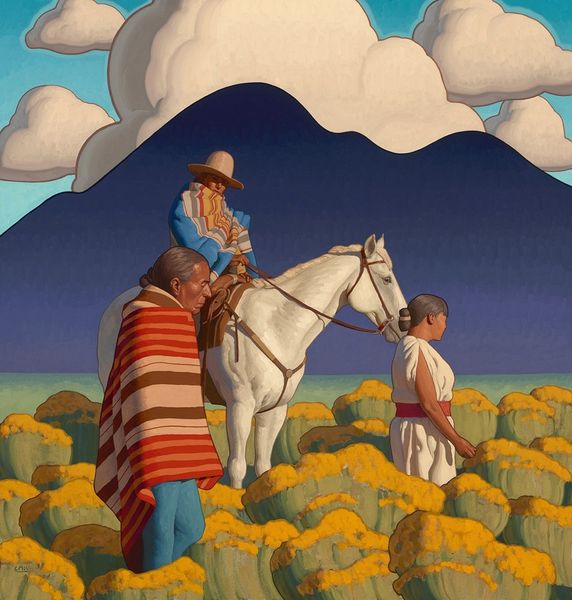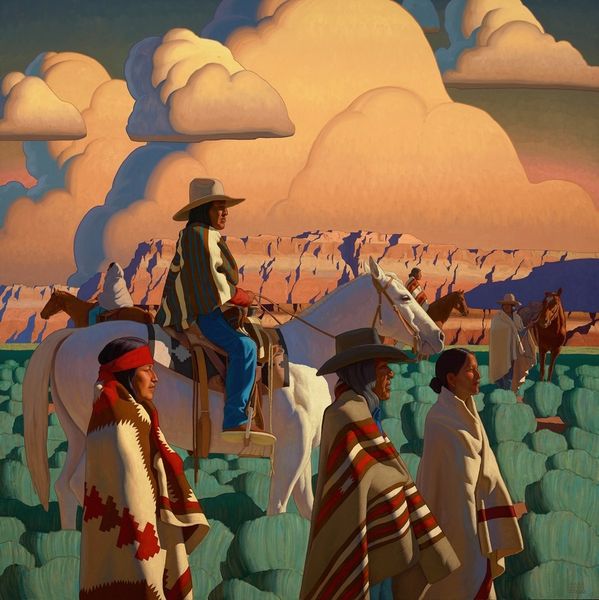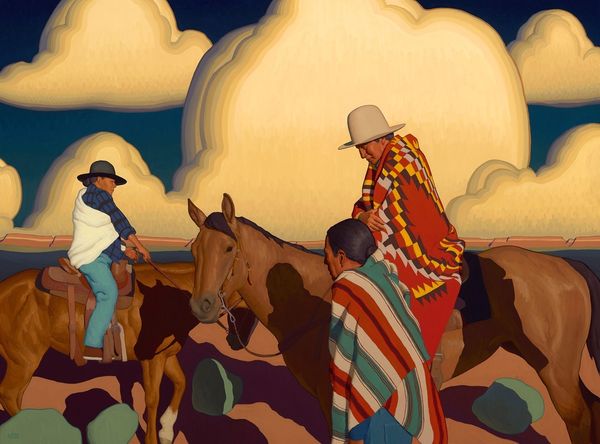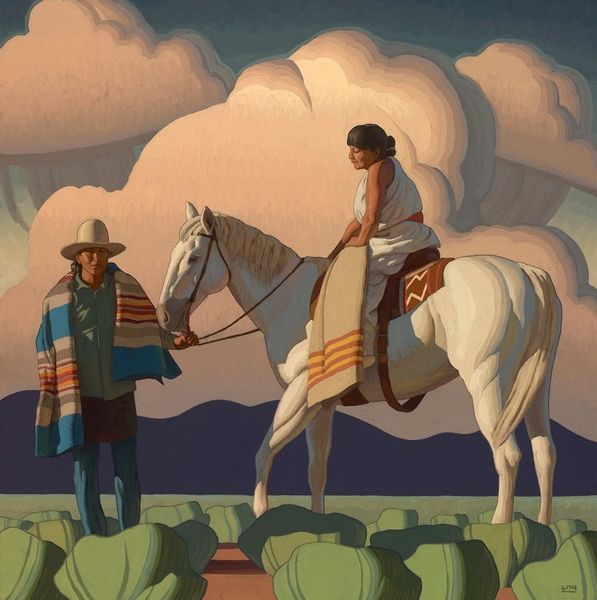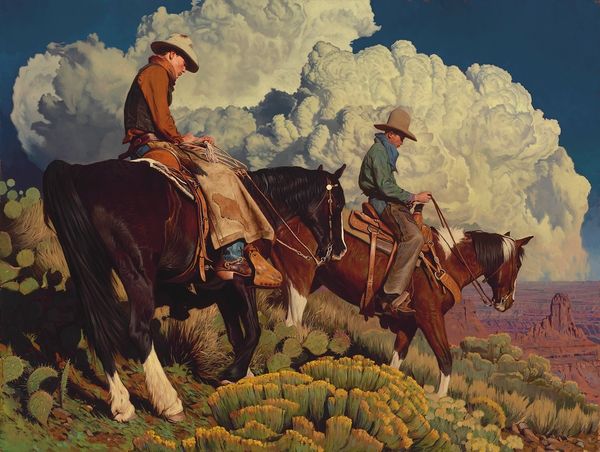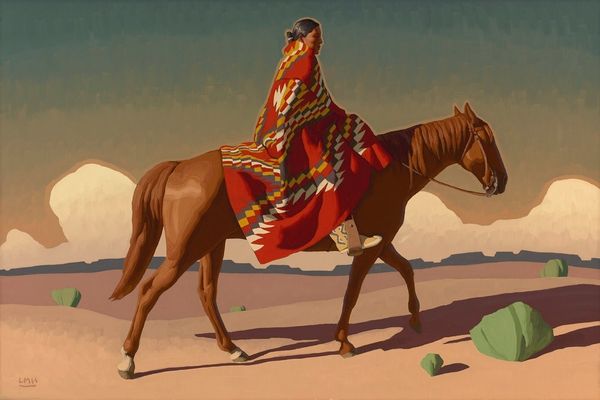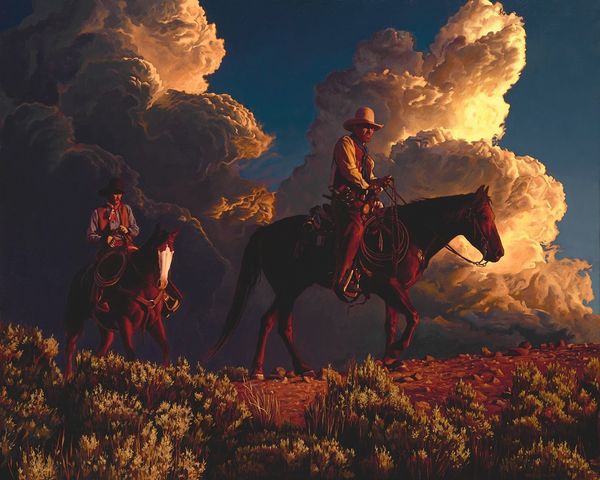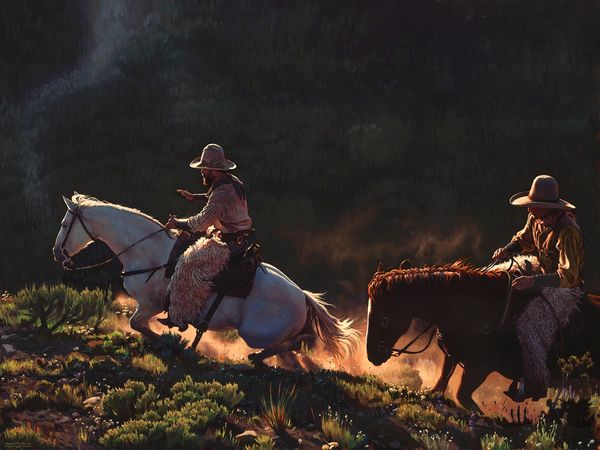
painting, oil-paint
#
painting
#
oil-paint
#
landscape
#
caricature
#
figuration
#
realism
#
indigenous-americas
Copyright: Modern Artists: Artvee
Curator: Immediately, I'm struck by how still it feels, yet the monumental clouds suggest impending movement. There's a tension there, isn't there? Editor: Indeed. What we're looking at is "The Middle of Everywhere" by Logan Maxwell Hagege, an oil painting rendering three Indigenous figures on horseback against a Southwestern landscape. It’s quite evocative, using those dramatic skies to create a strong sense of place. Curator: Place, and also… production? Those blankets, for instance, are powerfully rendered. Can you speak a bit to how such textiles reflect culture and artistic exchange? Editor: Absolutely. These blankets aren’t just aesthetically pleasing; they represent a rich history of trade, skill, and adaptation. Think of the wool, the dyes, the weaving process – all laden with meaning and reflecting available resources. It also speaks to the agency of Indigenous artisans in negotiating the terms of their cultural expression within colonial contexts. The patterns themselves, repeated and refined over generations, are incredible feats of calculation and labor, not just artistic creation. Curator: It's interesting that you mention colonial contexts, because looking at the piece in a more expansive way, I consider how Hagege chooses to portray these figures within this kind of flattened perspective and how his painting gets consumed in galleries catering to non-Indigenous audiences. I'm keen to hear your perspective. Editor: Certainly, representation matters deeply here. Museums and galleries play a role in framing indigenous narratives for public consumption. Consider the absence of explicit commentary on historical injustices – what choices has the artist made in presenting this idealized, almost timeless, vision? Does that vision reinforce or challenge existing power dynamics within the art world and beyond? Who benefits, and at whose expense? Curator: This perspective highlights the ethical responsibilities artists and institutions hold when engaging with Indigenous cultures, even when well-intentioned. I believe a conversation considering process, from materiality of cloth to choices in image-making is key. Editor: Agreed. These critical approaches provide crucial insights for understanding not only the artwork itself but also its impact on the broader cultural landscape. It compels us to look beyond the surface and ask difficult questions about power, privilege, and perspective.
Comments
No comments
Be the first to comment and join the conversation on the ultimate creative platform.
